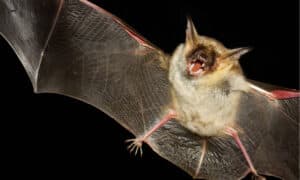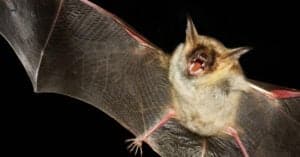Baby Bat: 5 Pictures & 5 Facts
Baby bats are some of the most adorable nocturnal creatures on Earth. Did you know that they can communicate with one another or that a baby bat is called a pup? Keep reading to learn five astounding facts about bat pups and to see some batty pictures!
#1: A Baby Bat is Called a Pup!
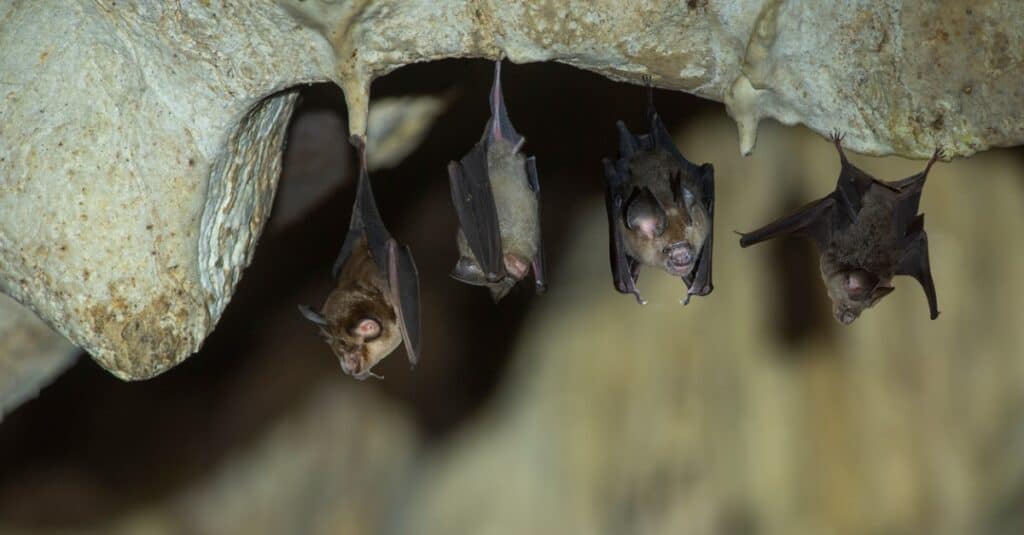
iStock.com/BirdHunter591
Baby bats are called pups!
When you think of the word “pup”, the baby bat probably isn’t the first animal that comes to mind. However, as babies, that’s what they’re called. However, bats aren’t the only animals with this name. In fact, they share the title with many others, such as seals, armadillos, and even coyotes!
Baby bats can also be called bittens – how cute!
#2: Fruit Bats Can Cry
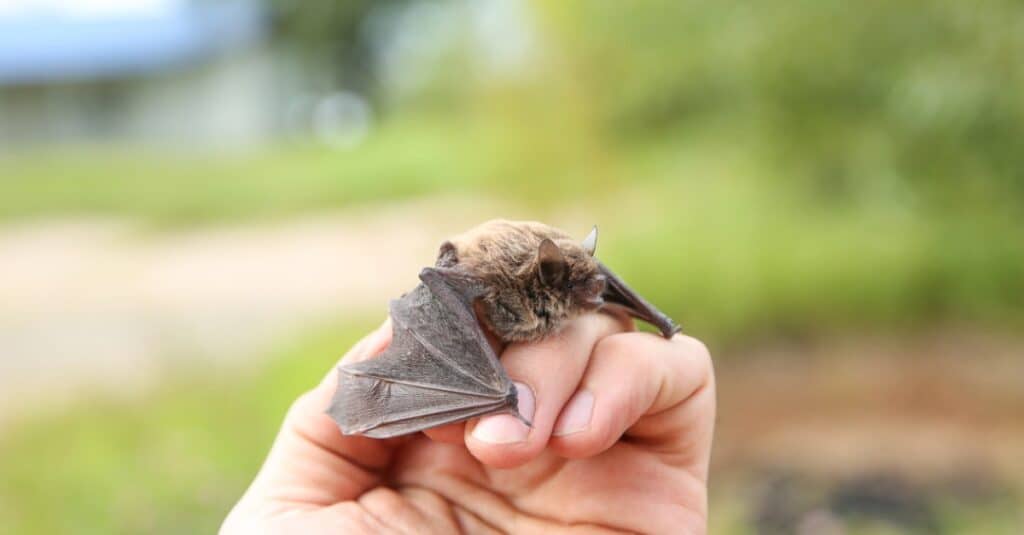
iStock.com/Petr Smagin
One of the major ways that humans show deep emotion is by crying. But did you know that bats can cry, too? It’s true! When bat mothers and babies are separated, they are known to cry for one another.
That’s not the only vocal exchange that fruit bats have! Scientists say that bats use their voices for specific reasons. Previously, the high-pitched squeaks heard from the Egyptian fruit bat roosts were thought to be meaningless. However, with the help of a special learning algorithm, scientists were able to prove otherwise.
The data collected about fruit bat communication via this algorithm suggests that Egyptian fruit bats use their voices for specific reasons. Sixty percent of the sounds made could be categorized into specific categories. Some examples of communication calls include asking for food, arguing about sleeping positions, and even requesting more personal space.
Who knew bats could communicate so effectively!
#3: Baby Bats Love to be Cozy

iStock.com/Remus86
Can you think of anything cozier than being wrapped in a warm, fuzzy blanket? Baby bats love to be warm, cozy and wrapped up close to their mothers for protection.
Fruit bats wrap their babies in their soft wings and hug them close to their bodies. This is done partly for warmth and partly for connection and protection with their babies. This ritual is adorable, of course, but it’s also essential to keeping bat pups warm. In fact, even orphaned babies are wrapped in soft blankets by their caretakers to mimic the mother’s warm, winged hug.
#4: Bat Pups Learn to Navigate from their Mothers
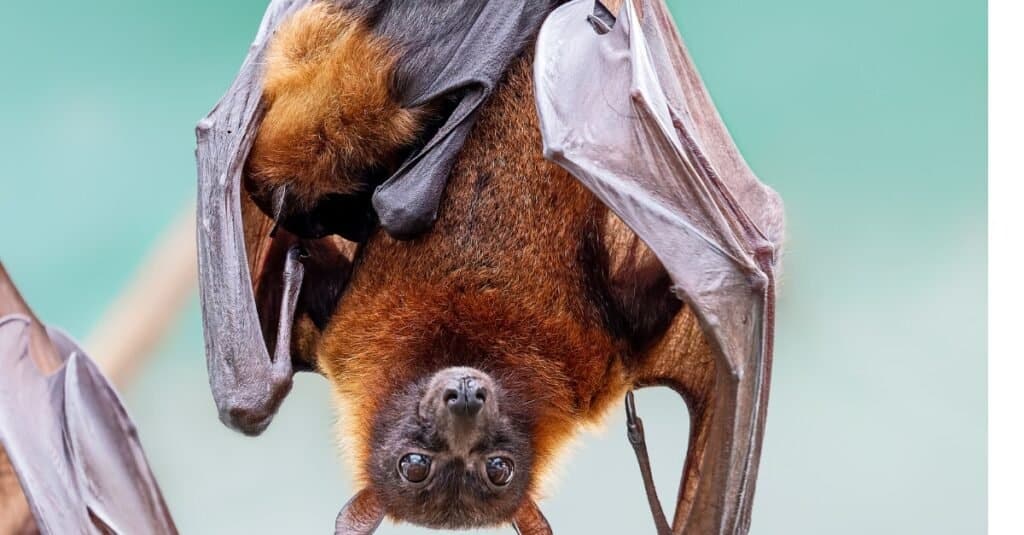
iStock.com/tane-mahuta
Since bats have an extremely good sense of hearing and can use echolocation to navigate, many people think they are blind. However, their eyesight is actually very good, as well. In the daytime, for example, fruit bats rely mostly on their keen sense of eyesight to find flowers to sip nectar from.
Bat babies aren’t born knowing how to navigate the world around them. Instead, they must learn from their mothers how to use their sight, smell, and echolocation. To do this, they hitch a ride on their mother’s backs to see how it’s done. During their journey, baby bats observe everything they need to learn to survive on their own.
Sometimes, adult bats will even drop their babies in trees to get them ready to fly solo. Mother Egyptian bats typically drop their young in “nursery trees” while they hunt for about the first ten weeks of the baby’s life. After this period is up, the babies are left in the cave to find their own way to the nursery tree.
Baby bats travel around the nursery tree to get familiarized with independent life. They explore the base of this tree to get familiarized before widening their horizons to larger areas.
#5: Baby Bats are the Only Flying Mammal on Earth
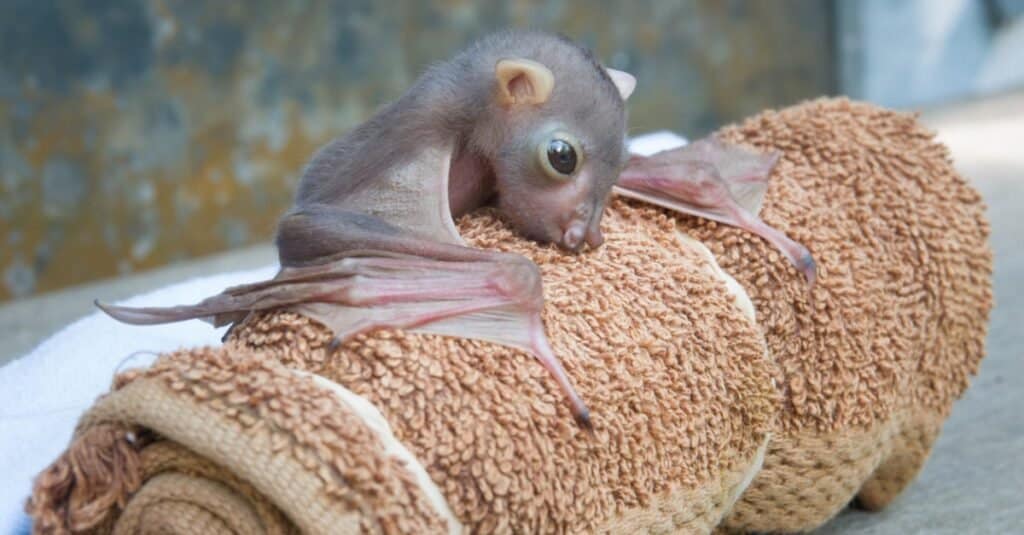
iStock.com/Connie Kerr
There are over 6,000 species of mammals in the world. Mammals inhabit almost every environment you can think of, from the frigid snowcaps of the Arctic to the warm and wet foliage of the Amazon Rainforest. But there is only one mammal on Earth that can soar through the sky: the bat!
There are over 1,000 different types of bats in the world today, and each one of them can fly. While other mammals like the flying squirrel, sugar glider, and cogulo might appear to fly, they can’t. Instead, they use their appendages to glide across the air.
FAQs (Frequently Asked Questions)
What are baby bats called?
Baby bats are called pups or bittens. A group of bats is called a colony.
How much do baby bats weigh?
Baby bats are tiny mammals, weighing in at just a few grams as newborns. Once they are fully grown, they weigh about ten grams and have a wingspan of 5.9 to 66.9 inches.
What do baby bats eat?
For the first six months of life, baby bats survive completely on their mother’s milk. Once weaned, they enjoy a diet of nectar, insects, and fruit.
Where do baby bats live?
Bats live in most areas of the world as humans do. They prefer to make their homes in warm, dark places, such as caves, trees, and even mines and other man-made structures.
More from A-Z Animals
Baby bats are some of the most adorable nocturnal creatures on Earth. Did you know that they can communicate with one another or that a baby bat is called a pup? Keep reading to learn five astounding facts about bat pups and to see some batty pictures!
#1: A Baby Bat is Called a Pup!

iStock.com/BirdHunter591
Baby bats are called pups!
When you think of the word “pup”, the baby bat probably isn’t the first animal that comes to mind. However, as babies, that’s what they’re called. However, bats aren’t the only animals with this name. In fact, they share the title with many others, such as seals, armadillos, and even coyotes!
Baby bats can also be called bittens – how cute!
#2: Fruit Bats Can Cry

iStock.com/Petr Smagin
One of the major ways that humans show deep emotion is by crying. But did you know that bats can cry, too? It’s true! When bat mothers and babies are separated, they are known to cry for one another.
That’s not the only vocal exchange that fruit bats have! Scientists say that bats use their voices for specific reasons. Previously, the high-pitched squeaks heard from the Egyptian fruit bat roosts were thought to be meaningless. However, with the help of a special learning algorithm, scientists were able to prove otherwise.
The data collected about fruit bat communication via this algorithm suggests that Egyptian fruit bats use their voices for specific reasons. Sixty percent of the sounds made could be categorized into specific categories. Some examples of communication calls include asking for food, arguing about sleeping positions, and even requesting more personal space.
Who knew bats could communicate so effectively!
#3: Baby Bats Love to be Cozy

iStock.com/Remus86
Can you think of anything cozier than being wrapped in a warm, fuzzy blanket? Baby bats love to be warm, cozy and wrapped up close to their mothers for protection.
Fruit bats wrap their babies in their soft wings and hug them close to their bodies. This is done partly for warmth and partly for connection and protection with their babies. This ritual is adorable, of course, but it’s also essential to keeping bat pups warm. In fact, even orphaned babies are wrapped in soft blankets by their caretakers to mimic the mother’s warm, winged hug.
#4: Bat Pups Learn to Navigate from their Mothers

iStock.com/tane-mahuta
Since bats have an extremely good sense of hearing and can use echolocation to navigate, many people think they are blind. However, their eyesight is actually very good, as well. In the daytime, for example, fruit bats rely mostly on their keen sense of eyesight to find flowers to sip nectar from.
Bat babies aren’t born knowing how to navigate the world around them. Instead, they must learn from their mothers how to use their sight, smell, and echolocation. To do this, they hitch a ride on their mother’s backs to see how it’s done. During their journey, baby bats observe everything they need to learn to survive on their own.
Sometimes, adult bats will even drop their babies in trees to get them ready to fly solo. Mother Egyptian bats typically drop their young in “nursery trees” while they hunt for about the first ten weeks of the baby’s life. After this period is up, the babies are left in the cave to find their own way to the nursery tree.
Baby bats travel around the nursery tree to get familiarized with independent life. They explore the base of this tree to get familiarized before widening their horizons to larger areas.
#5: Baby Bats are the Only Flying Mammal on Earth

iStock.com/Connie Kerr
There are over 6,000 species of mammals in the world. Mammals inhabit almost every environment you can think of, from the frigid snowcaps of the Arctic to the warm and wet foliage of the Amazon Rainforest. But there is only one mammal on Earth that can soar through the sky: the bat!
There are over 1,000 different types of bats in the world today, and each one of them can fly. While other mammals like the flying squirrel, sugar glider, and cogulo might appear to fly, they can’t. Instead, they use their appendages to glide across the air.

